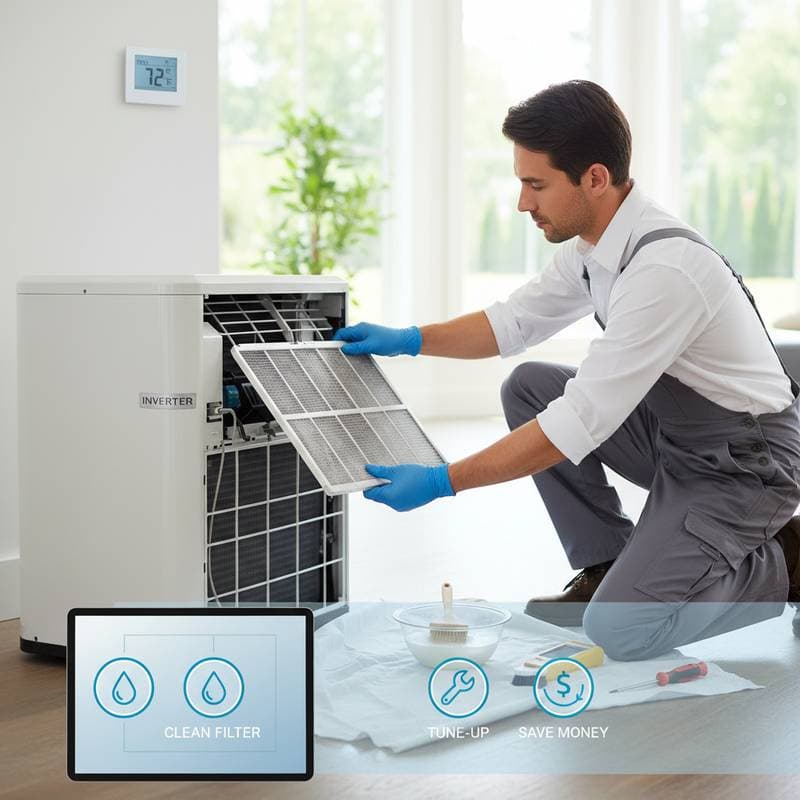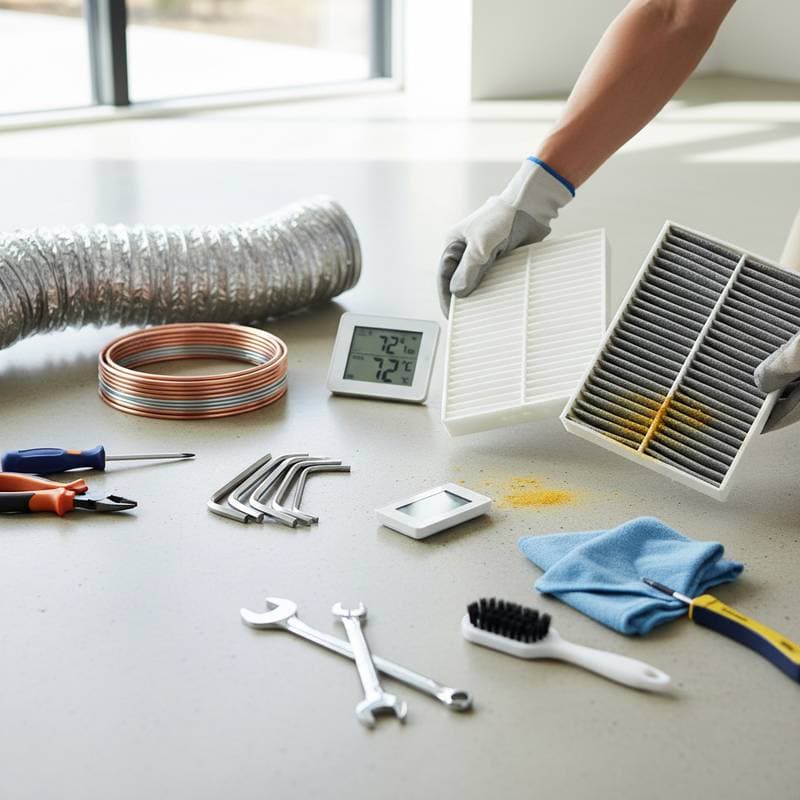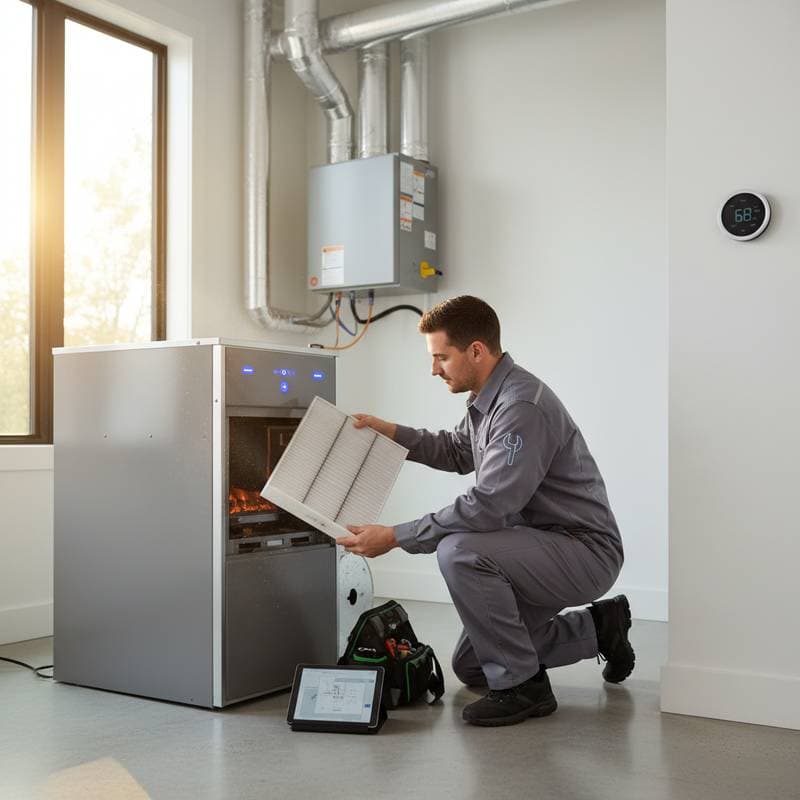Avoid AC Breakdowns: Essential Summer Preparation Checklist
A functional air conditioner provides more than relief from heat; it shields your home from excess humidity, mold development, and thermal damage. Numerous homeowners delay service until failure occurs, yet proactive care preserves funds and minimizes disruption. Pre-summer preparation enables efficient operation, controls energy expenses, and diminishes the chance of seasonal failures. This checklist details necessary actions prior to peak heat.
Conduct a Visual Inspection
Examine the outdoor unit first. Remove leaves, branches, and accumulated debris from the condenser. Proper airflow supports optimal cooling, and obstructions as small as a few inches impair performance. Trim surrounding vegetation to maintain at least two feet of clearance on every side. Verify that the unit rests level on its base, since uneven positioning generates vibrations and internal stress.
Inspect refrigerant lines for damaged insulation. Replace worn, cracked, or absent foam covering. Such insulation curbs energy loss and prevents condensation accumulation. Review the electrical disconnect box adjacent to the condenser for rust or corrosion signs. In cases of water entry, engage a technician to evaluate wiring prior to system activation.
Clean or Replace Air Filters
Filter replacement represents a basic task with substantial benefits. A dirty filter hampers airflow and compels the system to labor excessively. This elevates energy consumption by as much as 15 percent and accelerates compressor wear. Systems typically require filter changes every one to three months, based on filter type and usage frequency.
Individuals with pets or elevated dust exposure often necessitate more frequent replacements. Select filters matching the appropriate MERV rating for your equipment. Elevated ratings trap additional particles, though they may restrict airflow in incompatible systems. Refer to the owner manual or consult an HVAC professional to balance filtration effectiveness with airflow needs.
Inspect and Clean Air Vents
Obstructed vents diminish cooling output and produce uneven room temperatures. Traverse your residence to confirm all vents remain open and free from furniture or carpet interference. Employ a vacuum equipped with a brush attachment to dislodge dust from vents and grilles. For thorough duct cleaning, retain a specialist to assess internal buildup.
Ducts accumulate dust, pollen, and minor debris over time, which limits airflow. Indicators such as irregular cooling or musty odors suggest internal accumulation. Duct cleaning enhances air quality and aids in achieving uniform temperatures throughout the home.
Evaluate the Thermostat
Assess thermostat functionality at the season's outset. Adjust the setting several degrees below the ambient indoor temperature and observe if the air conditioner activates. Should the system fail to engage, verify battery status or power supply. Upgrading to a programmable or smart thermostat merits consideration. These units automate temperature adjustments during absences, thereby reducing energy expenditure and equipment strain.
Programmable thermostats can decrease annual cooling costs by up to 10 percent. Smart models that track humidity and optimize cooling cycles deliver enhanced comfort for many users.
Clean the Condenser Coils
Accumulated dirt on condenser coils frequently underlies subpar cooling. Debris functions as an insulator, hindering heat dissipation. To address this, deactivate power to the unit, detach the exterior panel, and rinse coils lightly with a garden hose. Refrain from high-pressure application, which risks fin deformation. For significant residue, utilize an HVAC-specific coil cleaner followed by a complete rinse.
Employ a fin comb to realign any distorted fins. This inexpensive tool, obtainable at hardware retailers, reinstates ideal airflow. Reattach the panel and restore power upon completion.
Examine Drain Lines and Pans
Air conditioners extract airborne moisture, which exits via the condensate line. Clogs in this line cause water backup within the system or interior leaks. Locate the drain line by the indoor unit and ensure its patency. Clear it using a vinegar-water solution to dissolve algae and deposits. Inspect the drain pan for fractures or pooled liquid, which may indicate obstructions or drainage faults.
Persistent dampness or water harm requires professional evaluation of the condensate pump and connections. Unresolved blockages foster mold proliferation and potential structural harm.
Lubricate Moving Parts
Friction undermines operational efficiency. Fans, motors, and similar components demand adequate lubrication for fluid performance. Contemporary units often feature sealed bearings exempt from oiling, whereas older designs require routine application. Squealing or grinding noises signal dryness or deterioration. Technicians apply suitable lubricants and diagnose mechanical concerns during service visits.
Test System Performance
Following initial cleaning and checks, operate the system for a minimum of 15 minutes. Monitor cooling speed, vent airflow uniformity, and presence of atypical sounds or scents. Measure the temperature differential between supply air from vents and return air to the unit. A 15- to 20-degree variance signifies healthy function. Lesser differentials point to refrigerant shortages or airflow deficiencies.
Arrange a Professional Tune-Up
DIY efforts benefit from annual professional oversight. Certified HVAC technicians verify refrigerant charges, electrical integrity, thermostat accuracy, and compressor condition. Early detection averts major repairs. Preventive maintenance prolongs air conditioner lifespan by years and curtails energy demands by up to 30 percent.
Select providers employing NATE-certified personnel and boasting positive reviews. Maintenance agreements often encompass seasonal checks and expedited support during intense heat periods.
Evaluate Home Insulation and Sealing
A well-maintained unit falters amid air leakage. Identify gaps near windows, doors, and attic accesses. Apply weatherstripping or caulk as required. Insulate attics and ducts to minimize losses. Effective sealing trims cooling expenses by 10 to 20 percent and sustains consistent indoor conditions.
Consider Energy Efficiency Upgrades
Units exceeding ten years in age warrant efficiency assessments. Modern alternatives incorporate variable-speed compressors, advanced refrigerants, and superior SEER ratings for reduced electricity use. Initial investment yields substantial savings over time. Numerous users observe bill decreases that offset replacement costs swiftly.
Options like smart zoning, ductless mini-splits, and superior filtration enhance control and comfort. Prior to replacement, request a professional load calculation to match the system to your home's requirements.
Establish Ongoing Maintenance Practices
With preparation complete, institute a routine schedule. Calendar filter replacements and book professional services ahead of cooling seasons. Preserve clearance around the outdoor unit and conduct monthly debris inspections.
Such practices extend beyond breakdown prevention. They promote superior air quality, reliable comfort, and diminished cumulative expenses.
Protect Your System for Lasting Performance
A dependable air conditioner upholds home comfort and counters heat-induced deterioration. Adhering to this preparation checklist optimizes efficiency across the summer. Tasks including filter maintenance, coil cleaning, and tune-ups avert hundreds in repairs and energy costs. Perform essentials independently or delegate complex inspections to experts, always aiming to forestall issues proactively.





